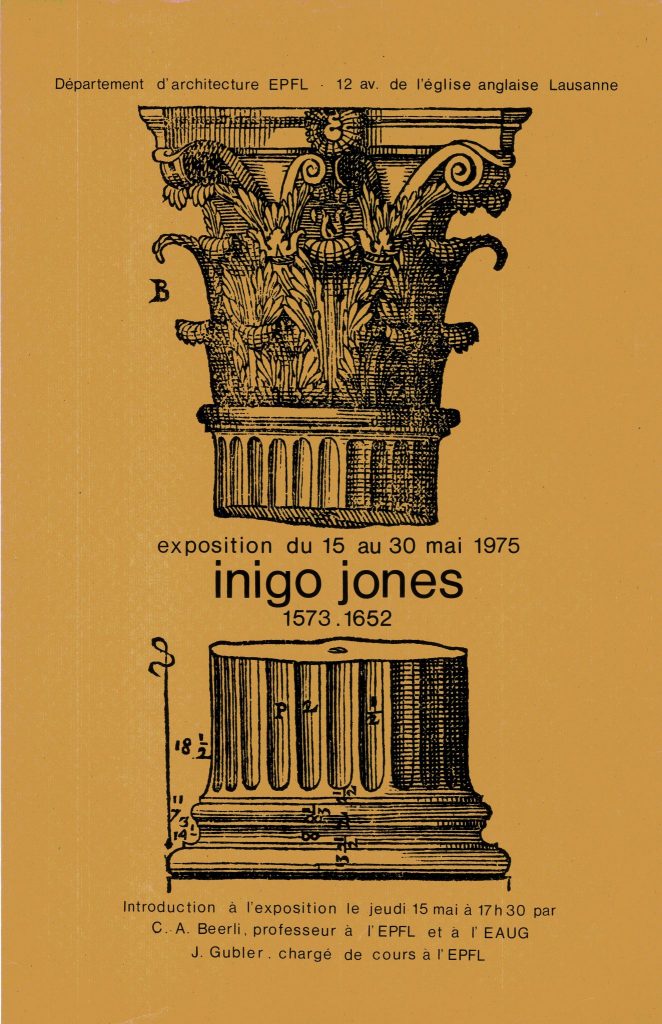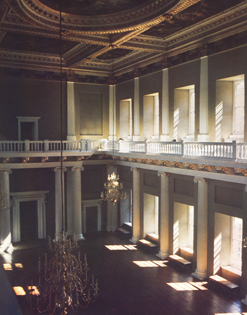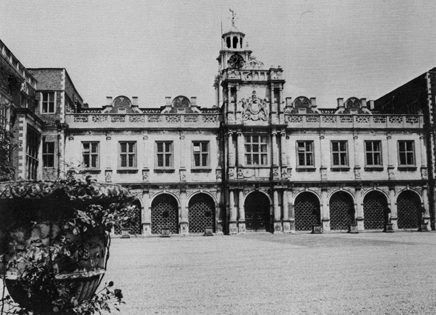
15 au 30 mai 1975
Exposition réalisée par le British Council, Londres
For hundred years ago last year, one of Britain’s greatest architect was born. His name: Inigo Jones, a man who learned almost all he knew from the masters of Italy, France and Germany. To commemorate his life and work, the British Council has prepared a collection of 350 photographs for a tour of Europe. Inigo Jones, for all his fame, is a mysterious figure. he was born in 1573, the son of a cloth worker – long-nosed, round-eyed, benevolent-looking he seems from his portraits. Between the age of 24 and 32 he probably made two long visits to Europe, although nothing is known for certain. Then in 1605, at the age of 32, he was chosen by Anne of Denmark, the wife of King James I, to make designs for one of the fashionable court theatrical masques, a task he fulfilled with sketches “not to be equalled fol boldness, softness, sweetness ans sureness of touch”. Fron that time on, his fortune was made, an architect, designer, and general leader of good taste. He helped in diplomacy, and made another long visit to the Continent, as far south as Naples, as far East as Nuremberg. He became surveyor and architect to the heir to the throne, the Prince of Wales, then to King James himself. He quarelled with Ben Johnson, whom he called “the best of poets and the worst of men”. He became a member of Parliament and a magistrate. He died in 1552, aged 79. Inigo Jones revolutionissed English architecture and design generally. He did this by introducing the full style of Hign Renaissance, after Vitruvius and Palladio. This meant imposing symetry, proporton ans restraint on the efflorescence of the local Gothic tradition. The exhibition shows what he want to do, as expressed in his own beautiful handwriting. First you study the parts of a building, then you adorn them. “The outward ornament ought to be solid, proportioned according to the rules (the golden rule, the proportion of one-third to two-thirds) masculine and unaffected”. Of all this activity little remains today. Only three main buildings can still be seen. The first is the incomparable Banqueting House in Whitehall, the first classical building in England, completed in 1619, in the form of a double cube, in three different coloured stones : brown at the base, dun for the main walls, white for the decorations, the columns and swages of fruit. Another exemple is the little Queen’s Chapel in St James’s Place, the first church to be built in England in classical style and finished in 1627. And the third creation is equally beautiful and equally revolutionary : the first English house in the full Italian manner, the Queen’s House at Greenwich, completed in 1637. All this, and much more, the exhibition demonstrates with clarity and vividness. It shows the might-have-beens of which the most tantalising are 70 designs made in 1638 by his partner John Webb, for a vast new Royal Palace in Whitehall, a kind of English Tuileries.


The main room of the Banqueting House with the celebrated Rubens ceiling